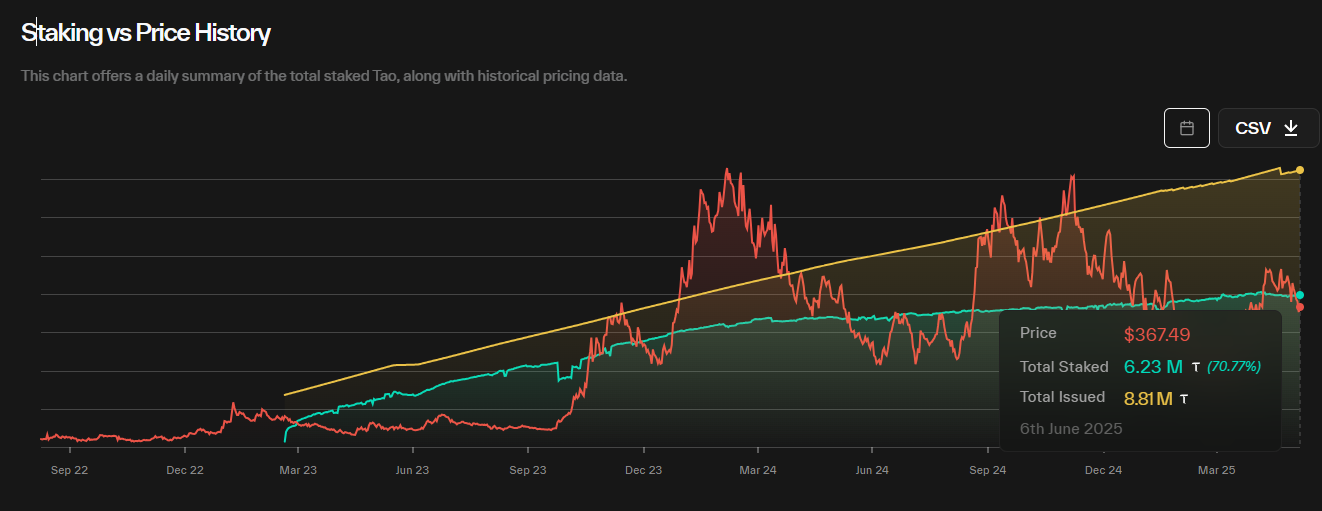Bittensor recorded a new all-time high in the number of subnets. Major developments within the ecosystem in Section 2 promote positive expectations that tao tokens could reach $1,000 in 2025.
So, what are these new developments and why are they important? Let’s take a closer look.
What does the number of records in the bittenser subnet mean?
According to data from Taostats.io, Bittensor reached the highest subnet count ever in early June 2025 with 118 active subnets.
To understand this milestone, it is important to know that subnets are subnets within the two times ecosystem. They are where developers, data providers (minors), and validators work together to build, train and evaluate distributed AI models.
Each subnet focuses on specific tasks, such as natural language processing, data analysis, and AI content generation.
According to the project documentation, these subnets work under the incentive model. Miners and validators receive tao tokens as rewards for contributing to the network.
The increase to 118 subnets indicates a strong ecosystem expansion. This means that more AI projects, from developers to investors, will be launched on Bittensor, bringing out more participants.
This rise also reflects wider diversification in decentralized AI applications. As a result, the Bittensor network becomes more robust and flexible. However, we also present challenges.
Maintaining quality and performance across subnets requires continuous technical upgrades to ensure network stability.
Bitgo is a partner with Yuma and drives institutional tao staking
Another important growth driver is the recent partnership between Bitgo and Yuma.
Bitgo, a leading digital asset management platform, works with Yuma, the top validator of Bittensor, to provide tao staking services to institutional investors.
The move will allow investment funds, asset managers and large companies to participate in the Vittenser network. They can earn staking rewards while supporting the development of decentralized AI.
This partnership will increase Tao’s liquidity and strengthen institutional trust in the long-term potential of Bitensar.

According to TAOSTATS, more than 6 million TAOs are currently being piled out, representing more than 70% of the circulation supply.
Additionally, the Yuma Consensus 3 upgrade, announced by Opentensor in early June, brought significant improvements to the network. The Yuma Consensus is Bittensor’s core consensus algorithm. It assigns rewards to miners and validators based on their contributions.
Upgrades enhance the mechanism of fraud detection and punishment. It also optimizes how rewards are distributed.
Can Bittensor (TAO) reach $1,000 in 2025?
The optimism about Bitenser comes from technical upgrades and bullish price forecasts. Using Elliott Wave theory, analyst decoding predicts that Tao could soon break above $1,000.

“We see similar structures and bullish setups to many other altcoins, but few people are as strong as Tao, IMO,” commented.
However, Decode’s predictions may be overly optimistic. AI Altcoins’ total market capitalization fell more than 50% from $69 billion at the end of 2024 to $31 billion today.
The recent Beincrypto report also highlights that the AI Crypto sector has declined by more than 45% since the start of the year.
Tao appears to be facing the same problems as many platform altcoins, including SEI, Sonic, and Avalanches. Despite its strong basics, investors are hesitant to commit capital.
Disclaimer
In compliance with Trust Project guidelines, Beincrypto is committed to reporting without bias and transparent. This news article is intended to provide accurate and timely information. However, we recommend that readers independently verify the facts and consult with experts before making decisions based on this content. Please note that our terms and conditions, privacy policy and disclaimer have been updated.
